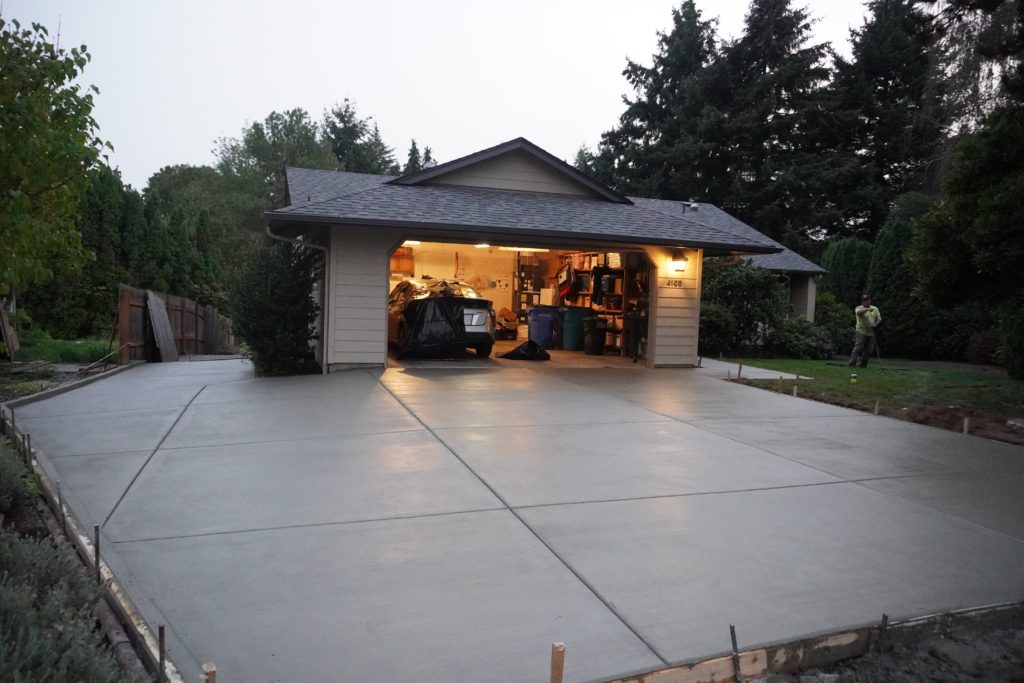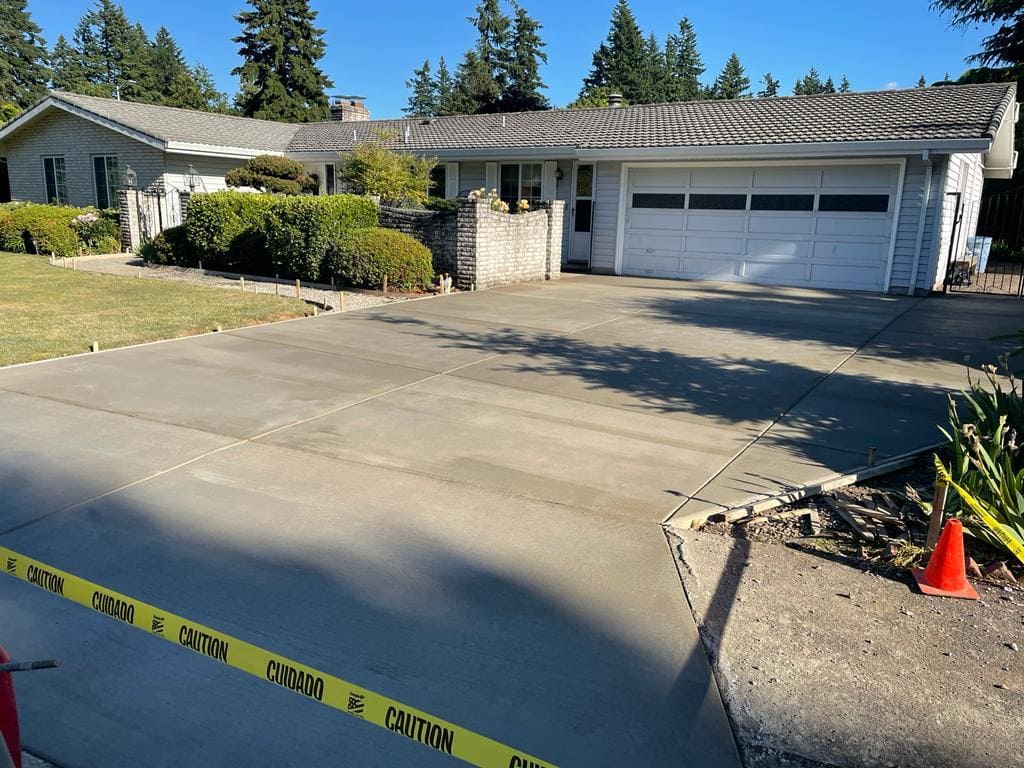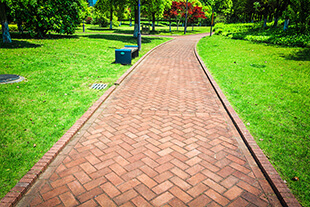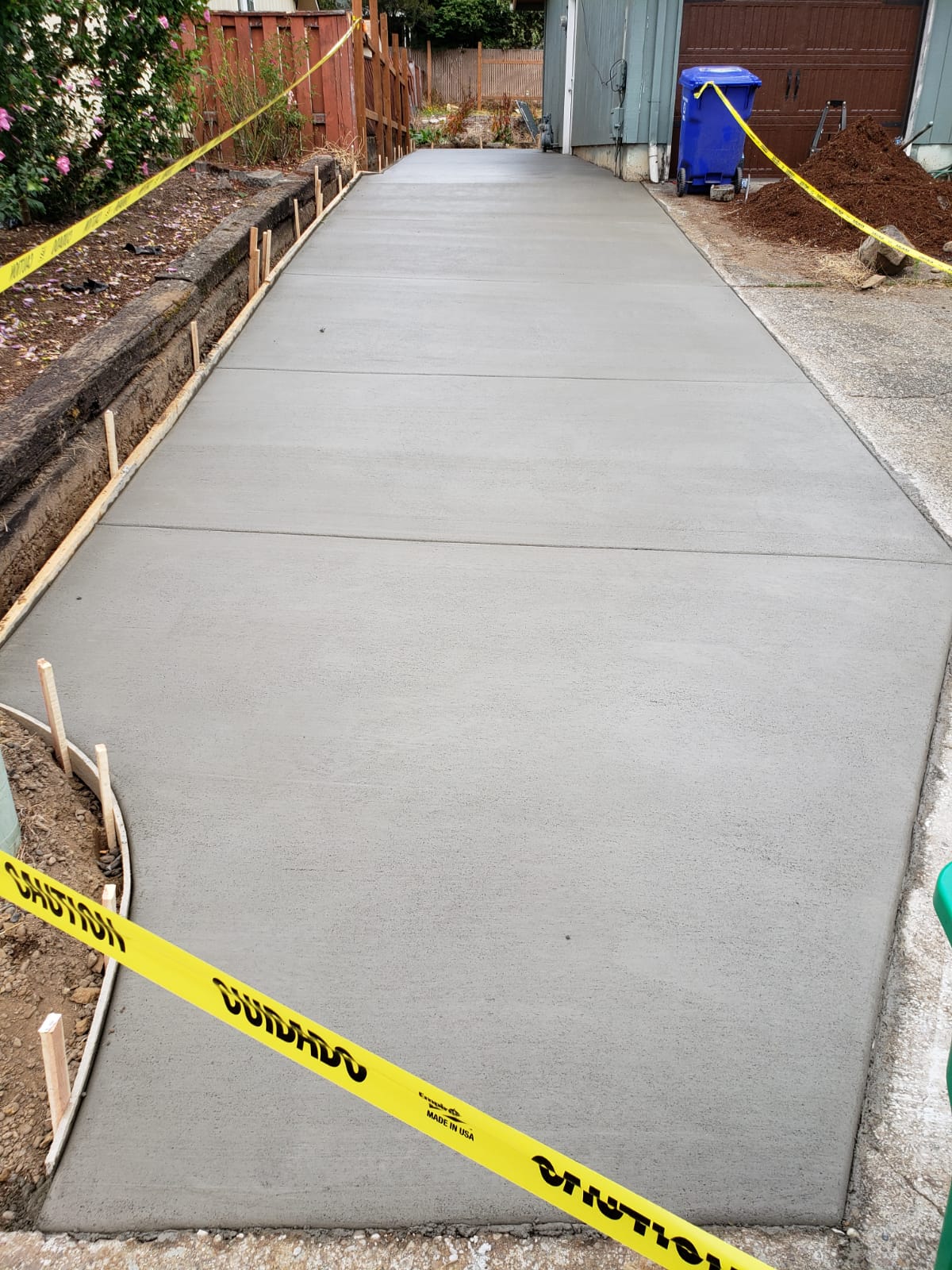Concrete driveways, patios, and walkways increase the value of a home while reducing its maintenance costs. Low maintenance is the primary factor to consider when getting substantial work done compared to other landscape materials.
Concerning driveway maintenance, concrete is the least expensive and least-maintenance material. You want to protect your investment and keep it looking good for years to come, so you take good care of it.

Taking regular care of your concrete patio, driveway, sidewalk, etc., will extend its service life. Removing the roots of the trees or shrubs that grow on the driveway is recommended so that they will not push up and cause cracks. The gutters on your driveway should drain away from it when it is first laid, so water will not accumulate. The following maintenance tips will help you:
Resolve Concrete Problems
It’s essential to treat cracked or broken pieces before water and winter weather can aggravate them—Patch concrete cracks and holes to prevent further damage.
Remove dirt and debris from the driveway by sweeping and power washing. Let the patching material dry before applying it. As a final step, apply concrete sealant. When expansion joints are not sealed, cracks can be just as problematic. Keep water from seeping into fissures by thoroughly cleaning the joint and applying silicone caulk.
Prevent Cracking On Your Driveway
Driveways made of concrete are very durable. Concrete can fail because of a specific element. As the temperature falls during the winter, the concrete is flooded with water, freezes, and expands. Cracks spread quickly through this process. Just one winter can noticeably lengthen and widen them.
Winter is just around the corner! Use concrete sealant this fall to prevent cracks. You can seal your driveway now, even if it’s never been filled. Using a power washer, clean the driveway of dirt and sap. Your local hardware store may have chemical cleaners to help you clean concrete and asphalt. Seal it afterward
Taking Care of Snow
Salt or chemical de-icing products can be convenient in winter but can damage concrete driveways. When ice melts and re-refuses, the concrete scales and spalls. Salts and chemical products can also damage newly laid concrete during the first winter, so avoid them.
Maintain a clean driveway
Maintaining the appearance of your vehicle requires cleaning stains caused by lubricant, brake fluid, and other materials.
Motor fluid can penetrate concrete up to a quarter-inch, while asphalt can be softened. When you use grease-cutting dishwashing detergent and warm water, you should:
- Absorb fresh oil using non-clumping kitty litter.
- Scrub with a regular brush.
- If the stain is old, wash it repeatedly with a strong, environmentally friendly cleaner.
Make sure the surface is maintained.
Avoid dropping sharp objects or using sharp edges on concrete surfaces (like ice chippers). Snowblower blades should be raised to avoid scratching concrete. To remove snow or dirt, you should use plastic shovels rather than metal ones.
Conclusion
You tend to overlook your driveway until it stains or cracks, one of the most used parts of your house. Please give them the attention they deserve by fixing their problems as quickly as possible. It is not only possible to extend the lifespan and attractive look of your driveway well into the future, but it is also possible to save money over time.




